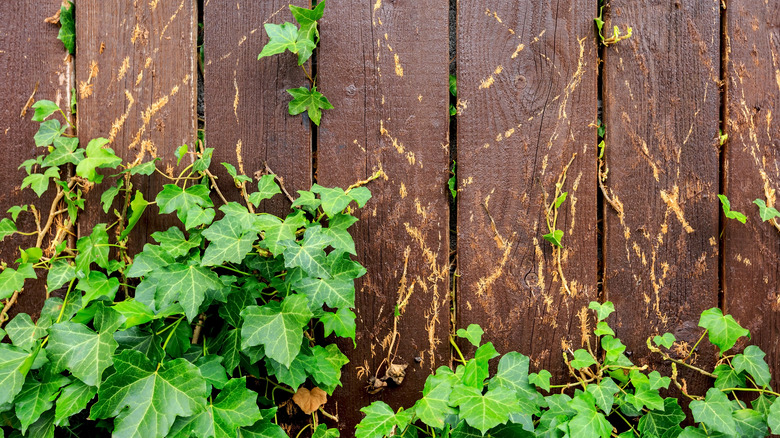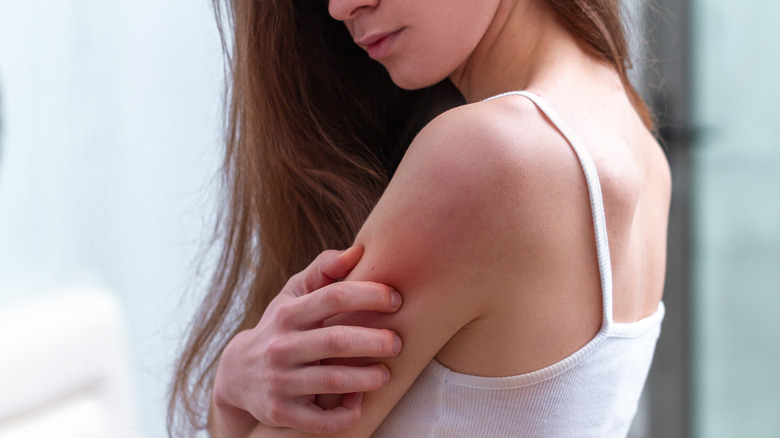This Is What Happens To Your Body When You Get Poison Ivy
Poison ivy is a plant that causes an itchy skin rash (via Health). Also known as contact dermatitis, poison ivy rash is an allergic reaction to urushiol oil — an oily resin found on the leaves, stem, and roots of poison ivy. Characterized by redness, itchiness, and swelling, the painful rash appears on 85% of people who come in contact with poison ivy, and the rash will develop wherever the plant touched your skin, taking the form of lines, streaks, or patches. In rare and more severe cases, the rash may spread to your eyes or mouth.
While the primary sign of an allergic reaction to poison ivy is a raised rash, other signs and symptoms include hives, blisters, and bumps. Over time, poison ivy blisters will burst and ooze a clear liquid. If they get infected, however, they will become filled with pus. If your eyes swell shut or you have trouble breathing, you should seek emergency medical care.
How to treat poison ivy
While poison ivy rash usually resolves on its own, there are a few things you can do to help treat and manage your symptoms. For instance, you can help treat your rash by washing your skin and clothes (via Healthline). Soaking in the tub shortly after coming in contact with poison ivy can help wash away some of the urushiol oil on your skin, which may result in a more moderate allergic reaction. Washing your clothes is vital to clear them of the oil, which can otherwise spread and lead to additional contact.
You can also apply lotions, creams, and ointments on your skin to help ease the swelling and pain. Skin care products like calamine lotion, hydrocortisone cream, menthol cream, and aloe vera can help calm and soothe your skin and reduce any itching and irritation. In addition, taking antihistamines can help treat your allergic reaction and manage your symptoms by relieving some of the itching and making you drowsy, which will allow you to fall asleep more easily and get a good night's rest.


